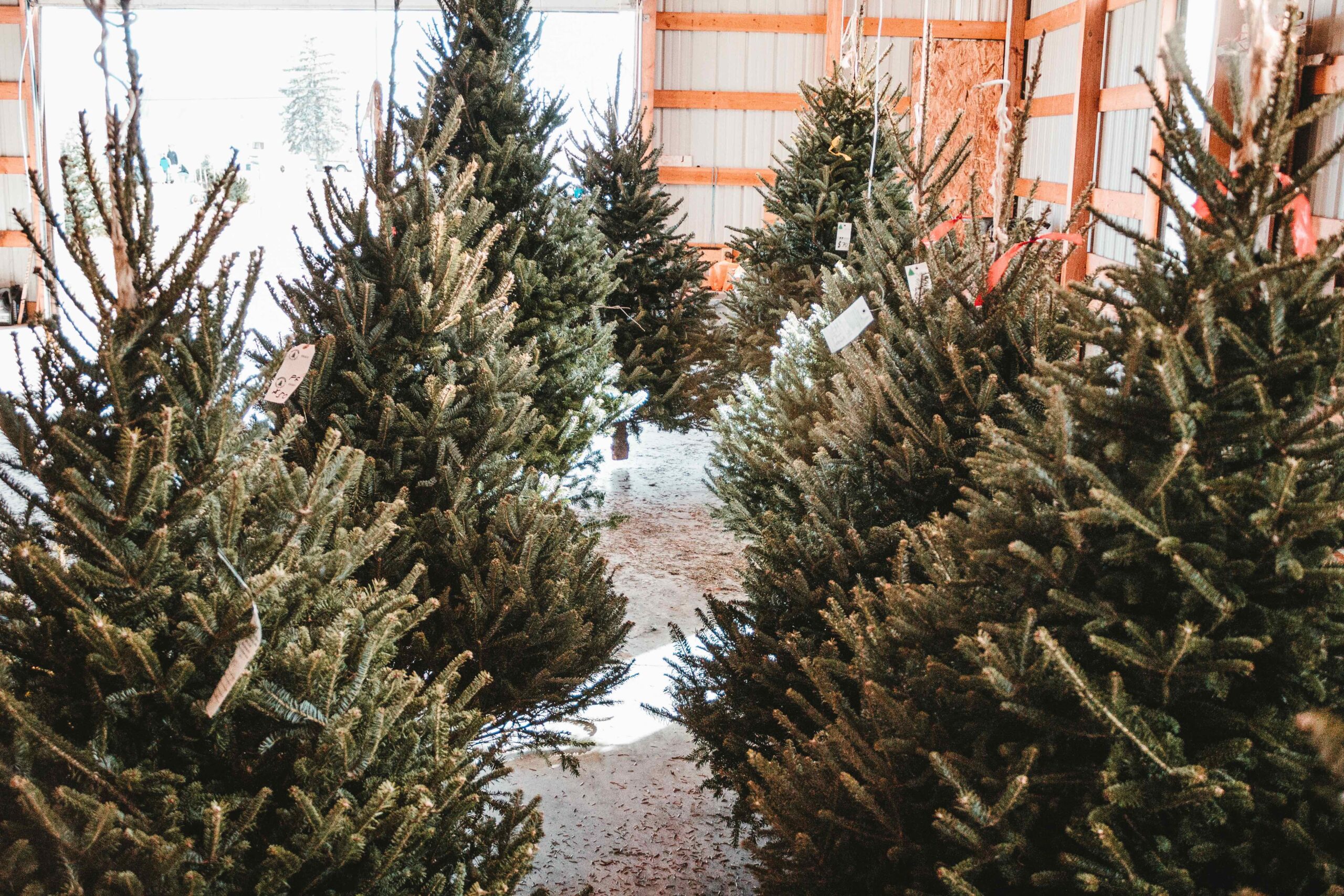CONTRIBUTED BY
COLE SIKES OF
ALABAMA EXTENSION
AUBURN —
The iconic scent of Christmas trees is wafting through the air. Soon, families will begin the search for the perfect addition to their living rooms. However, these elements will come at a higher cost than seasons of yore. An Alabama Cooperative Extension System assistant professor explains what shoppers can expect as they shop for trees this holiday season.
ECONOMIC IMPACTS ON CHRISTMAS TREE INDUSTRY
According to Alabama Extension Commercial Horticulture Assistant Professor Jeremy Pickens, Christmas tree shoppers could see a small price increase in both precut lot trees and farm-grown trees.
“Across all of agriculture, the cost for fertilizer, fuel and chemicals have gone up significantly,” Pickens said. “To cover some inflated costs, growers and box stores may choose to raise their overall Christmas tree prices this year.”
A survey from The Real Christmas Tree Board (TRCTB), a national research organization funded by North American Christmas tree growers, indicated 5% to 15% of TRCTB members would be increasing prices for 2022.
Frank Wadsworth of Wadsworth Christmas Tree Farm has been growing and selling trees for 46 years. The Elmore County native said the 2022 growing season has produced some challenges for the family business.
“The cost of everything from herbicides to fertilizer has more than doubled in price,” Wadsworth said. “For example, a lawnmower blade last year was $12. This year, one blade costs $25.”
Pickens said he believes consumers will understand this price increase given the economic changes during the past two years since COVID-19 crippled the United States supply chain. This cost is also representative of issues with tree availability.
Wadsworth also had difficulty obtaining seedlings, as well as precut fir trees for sale. Local tree farmers often cannot compete with the buying power of big box stores. So, this disadvantage means that local markets may not have the supply or variety consumers are accustomed to this year.
“If you want to get an Alabama-grown tree, then you should go early,” Pickens said. “Growers are selling out earlier and earlier each year due to a rapid increase in demand.”
Pickens also adds that, historically, Christmas tree farms open the day after Thanksgiving, but many chose to open earlier this year to ensure that each family has ample opportunity to purchase a tree.
PICKING THE PERFECT TREE
The first step to purchasing a Christmas tree is to determine which species of tree you want in your home. Most lot trees are Douglas and Fraser firs, which have the classic tree smell combined with strong, robust branches for heavy ornaments. However, these species do not grow well in Alabama, meaning the firs you see on lots have been brought from cold-climate states.
Other species consumers will find at choose-and-cut farms in Alabama include Murray cypress, Arizona cypress, Leyland cypress, Eastern red cedar and Virginia pine. These species typically have fuller foliage than Northern firs and have branches best suited for lighter ornaments. None of these trees are considered more valuable than the other.
To ensure a long-lasting tree, Pickens suggests buying a fresh-cut tree from a local choose-and-cut operation or buying precut trees with their bases stored in water.
“Trees that were stored in water will last longer because they have been kept hydrated,” Pickens said.
HOW TO CARE FOR A CHRISTMAS TREE
Pickens said the easiest way to ensure a healthy Christmas tree is to always keep the water reservoir full.
“I check my tree daily until I get a feel for its water use,” Pickens said. “If you are unable to bend down to check, construct a dipstick. Just take any rod, (i.e., a broom handle, pool stick, fishing rod, etc.) and mark the depth of the water bowl on the side. Check the water level by dipping the stick in the water bowl to reveal a watermark. It’s just like checking your automotive oil.”
It is important to keep the stick as vertical as possible when checking. This method will ensure the most accurate water level reading. If the tree is placed in an area exposed to heat (i.e., HVAC or fireplace), consider moving the tree or closing the appropriate vents causing the exposure. While not completely necessary, keeping the room temperature a little lower and reducing exposure to direct sunlight will also cut down on the tree’s water needs.
WHAT ABOUT AFTER CHRISTMAS?
When it is time to say farewell to the family Christmas tree, Pickens said there are some options for responsibly disposing of it.
“Check with your local municipalities, as some have tree collection points,” Pickens said. “These trees are often turned into mulch, and sometimes the mulch is free.”
A popular method of tree repurposing is to place them in ponds or lakes to serve as fish bed structures. Some people also use them to start a bonfire during the winter. Everyone should heed caution if burning a dry Christmas tree. The hot fire can get away quickly.
MORE THAN JUST A TREE
Pickens said visiting a Christmas tree farm will provide more than buying a tree. These farms are one of the most popular forms of agritourism and they provide picture-perfect moments families cherish for a lifetime. Alabama tree farms provide great venues to kick off the Christmas season.
“When you come to a farm, you leave with more than a tree; you leave with memories,” Wadsworth said. “There are kids that I remember 20 to 30 years ago who return every year with families of their own. It is very gratifying to be a part of their traditions.”
LEARN MORE
To help find a farm or retailer, try the location tool from TRCTB, and search using a ZIP code. Consumers may filter results by choose-and-cut farms, garden centers, home improvement stores and more.
Visit the Alabama Extension website, www.aces.edu, to learn more about Christmas trees.

